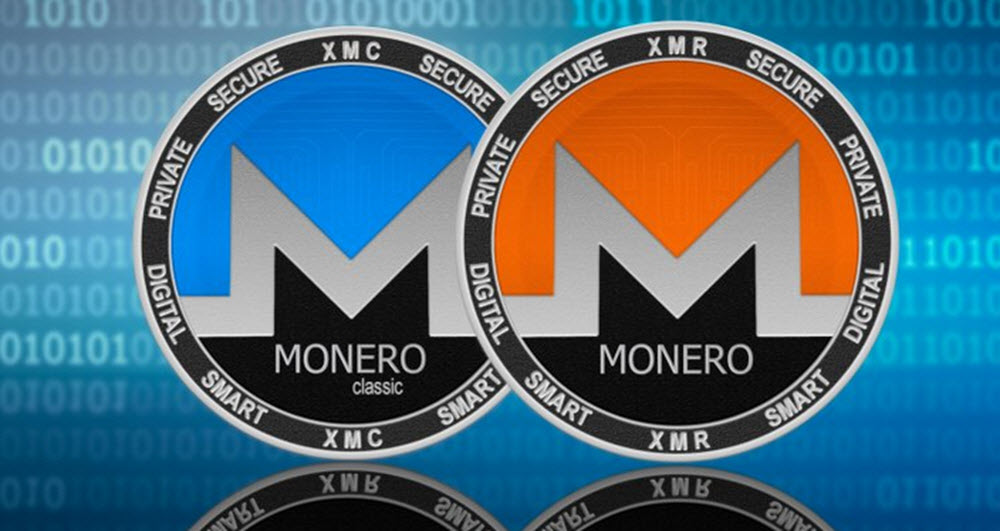 Monero is a cryptocurrency (XMR) and blockchain network that markets itself as being several notches above the rest when it comes to privacy. Launched in 2014, Monero soon became a favoured cryptocurrency among clients desiring an even higher level of privacy than offered by more famous cryptocurrencies such as Bitcoin and Litecoin.
Monero is a cryptocurrency (XMR) and blockchain network that markets itself as being several notches above the rest when it comes to privacy. Launched in 2014, Monero soon became a favoured cryptocurrency among clients desiring an even higher level of privacy than offered by more famous cryptocurrencies such as Bitcoin and Litecoin.
Some clients use Monero all the way, while others use it simply to cause a break-up that will make a transaction, and the source of cryptocurrency in an e-wallet, more difficult to trace. Example: Instead of sending a transaction from A to B on the Bitcoin network, BTC:s are converted to Monero. After some delay, Monero is converted back to Bitcoin (not necessarily the same exact amount), and sent to an address with no links to the other Bitcoin address.
Data from August 2021 showed a Monero market capitalization of 5.27 billion USD.
Using Monero in online casinos and with online brokers / trading platforms
There is still not that many online casinos or online brokers / trading platforms that allow you to make deposits and withdrawals using Monero. Since Bitcoin, Ether and a few other cryptocurrencies are much more widely accepted, some Monero-users convert XMR into another cryptocurrency before making a deposit, and then make their withdrawal in an accepted cryptocurrency before converting the money back to Monero.
Examples of online casinos that accept Monero
Even though they are not as many as for Bitcoin and Ether, there are definitely online casinos where you can make both deposits and withdrawals directly in Monero.
Rolletto
FortuneJack
Bitcoin.ag
22Bet
Betandyou
Privacy
Monero utilizes an obfuscated public ledger. The idea is to prevent outside observers from knowing the source, the destination and the amount of a transaction. Account balances are also hidden by the obfuscation.
Unlike Bitcoin and most of the Bitcoin-derivatives, Monero utilizes a CryptoNight Proof-of-Work hash algorithm from the CryptoNote protocol. A ring signature mix the sender´s input with input from a group of other senders. This makes it considerably more complicated to trace a transaction. Also, a ring of confidential transaction mechanisms is in place to hide the transferred amounts.
The Monero network is famous for generating ”stealth addresses” for each transaction. Through this practice, it becomes extra difficult for anyone outside the transaction to find out the destination address.

Mining Monero
Monero was created to be extra resilient to application-specific integrated circuit (ASIC) mining. (ASIC mining is a very common type of Bitcoin mining.)
About Monero
- Abbreviation: XMR
- Symbol: ɱ
- Source model: BSD 3-Clause
- Timestamping scheme: Proof-of-Work
- Hash function: CryptoNight
- Issuance: Decentralized, block reward
- Block time: 2 minutes (but it used to be 1 minute)
- Sub-unit: 1 piconero (1 piconero is 1 trillionth of 1 minero)
Monero history
2014: Getting started
The codebase of Bytecoin was forked into the name BitMonero in 2014, by a BitcoinTalk forum member with the alias thankful_for_today.
Pretty soon, a community took over the development of the new cryptocurrency, after having voiced disappointment in what they saw as a glaring lack of improvements regarding issues such as block time and tail emission. Around the same time, the name was changed from BitMonero to just Monero. The names come from the Esperanto language, where monero means coin.
2016: Getting traction
Monero went through a period of rapid market capitalization growth in 2016, as it became a sought-after cryptocurrency for darknet transactions.
2017: Even more privacy
The Monero network boosted transaction privacy in 2017 by the implementation of an algorithm suitably named Confidential Transactions. The creator of this algorithm is Gregory Maxwell, who is also one of the Bitcoin Core developers.
2017 was also the year when the Monero network switched to a better version of the Ring Signatures feature.
